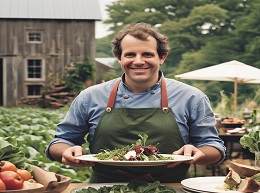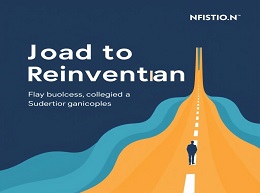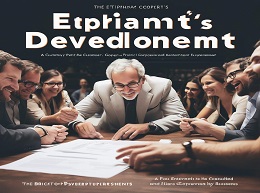The Third Plate: Field Notes on the Future of Food

A Culinary Revolution
Dan Barber's "The Third Plate: Field Notes on the Future of Food" is a visionary exploration of the future of food, advocating for a revolutionary shift in how we grow, cook, and consume food. Barber, a celebrated chef and co-owner of Blue Hill and Blue Hill at Stone Barns, challenges conventional farming and dining practices, proposing a sustainable and holistic approach that benefits both the environment and our palates. This review delves into Barber's compelling narrative, highlighting key concepts, transformative ideas, and real-world examples that make "The Third Plate" a must-read for food enthusiasts, environmentalists, and anyone interested in the future of our food system.
The First Plate: Traditional American Diet
Barber begins by describing the "First Plate," which epitomizes the traditional American diet: a large piece of meat accompanied by a small serving of vegetables. This plate reflects an era when food was abundant and agriculture was focused on maximizing yield and profit, often at the expense of the environment.
The Conventional Steak Dinner
A typical steak dinner with a side of potatoes and greens represents the First Plate. This meal prioritizes protein and carbohydrates, sourced from industrial farming methods that often rely heavily on monoculture and chemical inputs, leading to soil degradation and reduced biodiversity.
The Second Plate: Farm-to-Table Movement
The "Second Plate" signifies the farm-to-table movement, where the emphasis shifts to sourcing high-quality ingredients directly from local farms. While this approach values sustainability and quality, it often still centers around a protein-heavy diet with vegetables playing a secondary role.
Farm-Raised Chicken with Seasonal Vegetables
A farm-raised chicken served with a medley of seasonal vegetables illustrates the Second Plate. This meal, while more sustainable than the First Plate, still focuses on meat as the centerpiece, which Barber argues is not enough to create a truly sustainable food system.
The Third Plate: A New Paradigm
The "Third Plate" is Barber's vision for the future of food, where meals are designed around a balance of vegetables, grains, and small portions of sustainably-raised proteins. This plate promotes biodiversity, soil health, and a holistic approach to agriculture that integrates crops and livestock in a symbiotic relationship.
Wheat Berry Salad with Pasture-Raised Lamb
A dish featuring a wheat berry salad with a small portion of pasture-raised lamb exemplifies the Third Plate. Here, grains and vegetables are the stars of the meal, with meat playing a supporting role, reflecting a sustainable balance that benefits the environment and human health.
Embracing Biodiversity
Barber emphasizes the importance of biodiversity in agriculture. Monoculture farming, which dominates modern agriculture, depletes the soil and relies heavily on chemical inputs. In contrast, diverse farming systems that integrate multiple crops and livestock can enhance soil health, reduce pest outbreaks, and increase resilience to climate change.
The Polyface Farm Model
Polyface Farm, operated by Joel Salatin, is a prime example of biodiversity in action. The farm employs rotational grazing, where different species of livestock graze on various pastures in succession, allowing the land to recover and thrive. This method reduces the need for chemical fertilizers and pesticides, demonstrating how diversity can lead to a more sustainable agricultural system.
Soil Health: The Foundation of Sustainable Agriculture
Barber argues that soil health is the cornerstone of a sustainable food system. Healthy soil supports diverse plant and animal life, sequesters carbon, and retains water, making it essential for both environmental and agricultural sustainability.
Gabe Brown’s Regenerative Farming Practices
Gabe Brown, a pioneer in regenerative agriculture, has transformed his farm in North Dakota by focusing on soil health. Through practices such as no-till farming, cover cropping, and holistic grazing, Brown has improved soil fertility, increased crop yields, and enhanced biodiversity, all while reducing his reliance on chemical inputs.
Integrating Crops and Livestock
Barber advocates for an integrated approach to farming that combines crops and livestock. This symbiotic relationship can enhance soil fertility, reduce waste, and create a more resilient food system.
Blue Hill at Stone Barns
At Blue Hill at Stone Barns, Barber practices what he preaches by integrating crops and livestock. The farm grows a variety of crops and raises animals in a way that mimics natural ecosystems. For instance, pigs forage in the woods, fertilizing the soil as they go, while vegetable crops benefit from the nutrients left behind.
A New Culinary Philosophy
Barber calls for a shift in culinary philosophy, where chefs and consumers prioritize ingredients that promote environmental sustainability. This means embracing a wider variety of grains, vegetables, and lesser-known animal cuts, and designing menus that reflect the seasons and the local ecosystem.
Dan Barber’s WastED Pop-Up
Barber’s WastED pop-up restaurant in New York City epitomized this new culinary philosophy. The menu featured dishes made from food scraps and overlooked ingredients, such as vegetable trimmings, fish heads, and stale bread. This innovative approach not only reduced food waste but also showcased the culinary potential of ingredients that are often discarded.
Influencing Policy and Education
Barber’s ideas have influenced policymakers and educators, encouraging them to support sustainable agriculture and food education. By advocating for policies that promote soil health, biodiversity, and local food systems, Barber aims to create a more resilient and equitable food system.
The Stone Barns Center for Food and Agriculture
The Stone Barns Center for Food and Agriculture, co-founded by Barber, is a nonprofit organization dedicated to sustainable farming and food education. The center offers programs for farmers, chefs, and students, providing them with the knowledge and skills needed to support a sustainable food system.
Inspiring Chefs and Consumers
Barber’s work has inspired chefs and consumers to rethink their approach to food. By highlighting the importance of sustainability and the potential of underutilized ingredients, Barber encourages a shift towards more mindful and environmentally-friendly dining practices.
The Rise of Farm-to-Table Restaurants
The farm-to-table movement has gained momentum, with more restaurants sourcing ingredients directly from local farms and designing menus that reflect the seasons. This shift not only supports local farmers but also promotes a more sustainable and transparent food system.
A Vision for the Future of Food
"The Third Plate: Field Notes on the Future of Food" is a compelling and thought-provoking book that challenges conventional notions of farming and dining. Dan Barber’s vision of a sustainable food system, centered around biodiversity, soil health, and a balanced approach to agriculture, offers a roadmap for the future of food. By embracing the principles outlined in the book, we can create a food system that nourishes both people and the planet, ensuring a healthy and delicious future for generations to come.
Barber’s insights and examples provide a powerful argument for rethinking our approach to food, from the farm to the table. "The Third Plate" is an essential read for anyone interested in the future of food, offering a hopeful and practical vision for a more sustainable and equitable food system.













